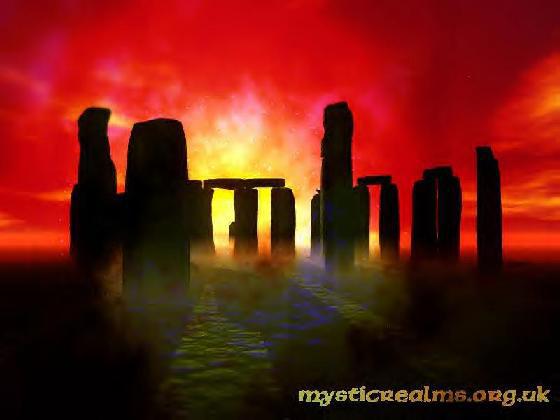Archaeologists Seek Stonehenge SecretsSource: The Associated Press
Posted: 04/01/08 8:20AM
Filed Under: Science & Tech
LONDON (AP) -
Some of England's most sacred soil was disturbed Monday for the first time in more than four decades as archaeologists worked to solve the enduring riddle of Stonehenge: When and why was the prehistoric monument built?
Why Was Stonehenge Built?
Archaeologists began digging Monday at Stonehenge at southwestern England's Salisbury Plain. They hope to discover when the mysterious circle of standing stones was built -- and why.The excavation project, set to last until April 11, is designed to unearth materials that can be used to establish a firm date for when the first mysterious set of bluestones was put in place at Stonehenge, one of Britain's best known and least understood landmarks.
The World Heritage site, a favorite with visitors the world over, has become popular with Druids, neo-Pagans and New Agers who attach mystical significance to the strangely shaped circle of stones, but there remains great debate about the actual purpose of the structure.
The dig will be led by Timothy Darvill, a leading Stonehenge scholar from Bournemouth University, and Geoffrey Wainwright, president of the Society of Antiquaries. Both experts have worked to pinpoint the site in the Preseli Mountains in south Wales where the bluestones -- the earliest of the large rocks erected at the site -- came from. They will be able to compare the samples found in Wales to those at Stonehenge on the Salisbury Plain.
http://news.aol.ca/article/Archaeologists-Start-Stonehenge-Dig/182058/ The excavation will date the arrival of the bluestones following their 153-mile journey from Preseli to Salisbury Plain and contribute to our definition of the society which undertook such an ambitious project," Wainright said. "We will be able to say not only why, but when the first stone monument was built."
Scientists believe the bluestones were first put in place about 2600 B.C., but they concede the date is only an approximation at best. The original bluestones were removed about 200 years later and scientists hope to find bits of them embedded in the earth.
Darvill said the excavation marks the first opportunity to bring the power of modern scientific archaeology to bear on a problem that has taxed the minds of so many experts since medieval times: Why were the bluestones so important to have warranted bringing them from so far away?
The excavation goal is to find remnants of the original bluestones, or related materials, that can be subjected to modern radiocarbon dating techniques to establish a more precise timeline for the construction of Stonehenge, said Dave Batchelor, an archaeologist with English Heritage, which oversees the Stonehenge site.
"We have to find the material that will give us a good date," he said. "That's where the luck comes in. We could get an absolute blank or we could get something magnificent or we could get something in between."
He said bluestones have an "inky, bluey, black" appearance and come from the Preseli Mountains in South Wales. About 6 feet tall, they are the smaller stones that make up part of the monument, alongside the larger sarsen stones, which are about twice as tall and were added later.
It is hoped that fixing the date of the start of construction with more precision will allow scientists to finally grasp how and why the monument was built. They also may learn more about how the stones were transported. Research shows the bluestones, weighing an estimated five tons apiece, may have been dragged from the mountains in south Wales to the sea, put on huge rafts and floated up the River Avon.
Archaeologists believe that before the bluestones were put in place, Stonehenge consisted of a circle of wooden posts and timbers built in approximately 3100 B.C.
The research that began Monday with the digging of a trench marks the first time ground inside the inner stone circle has been excavated since 1944. The area, revered as a powerful link to England's pagan past, is so sensitive that Cabinet approval was needed before the work could begin.
Renee Fok, a spokeswoman with English Heritage, said the project was okayed only after experts were convinced of its potential value. She said the project represents "the logical next step" after the two professors located the source of the bluestones in Wales.
"It's the culmination of their work, it makes sense to go back to the stone circle and get a date," she said.
"We want to strike a balance. We want the best research, but we can't just say go ahead and dig as you like, it's a very fragile area. Even the Druids are happy with this project, we've spoken to them and they don't object."
She said tourists will be able to visit Stonehenge as usual and will also be able to watch live video coverage of the excavation in special tents at the site.



